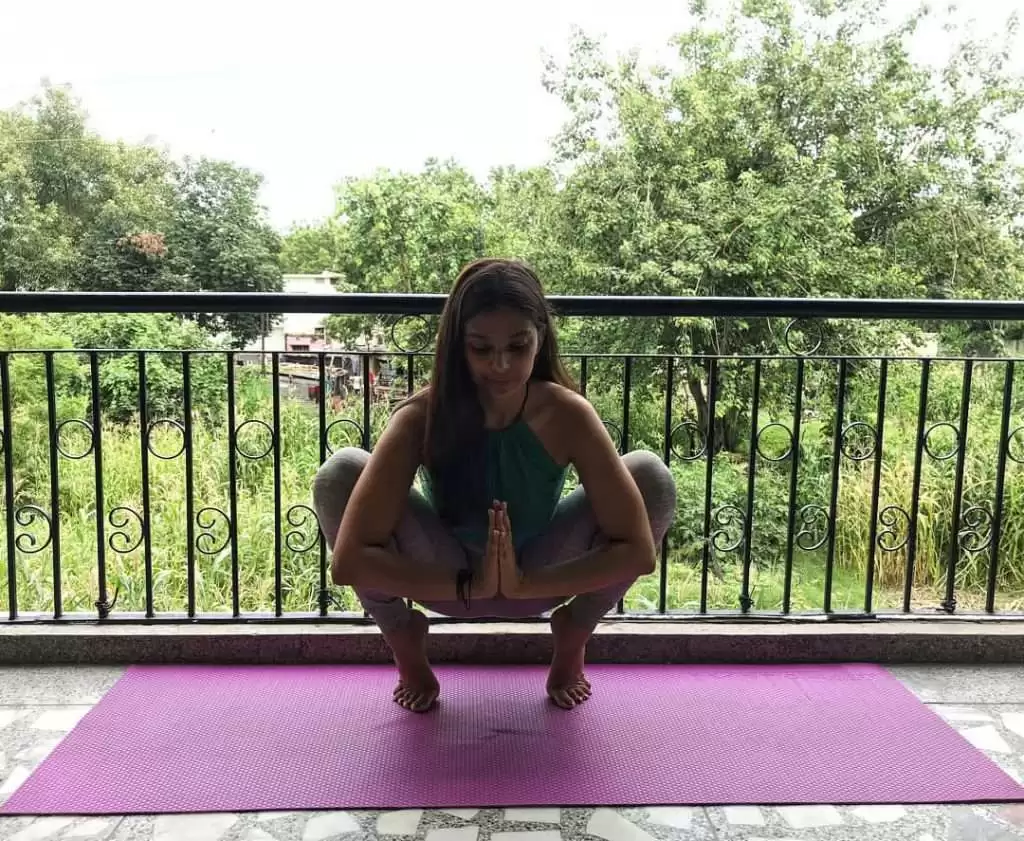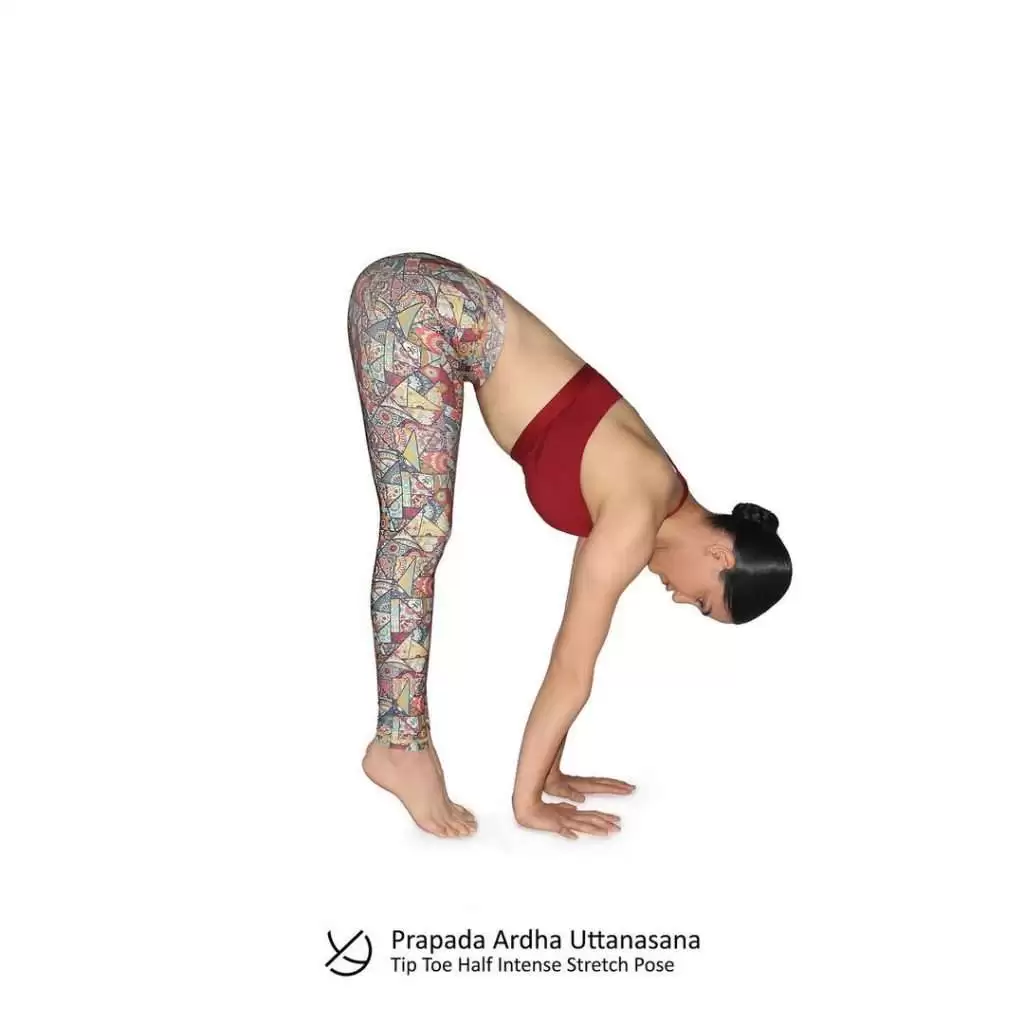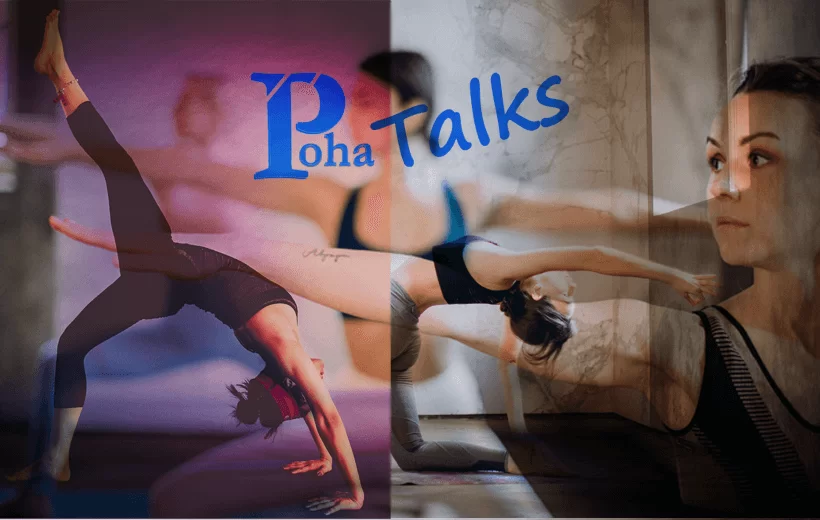As a new yoga student, you might see overwhelmed by the composition of yoga poses and their odd-sounding names. But yoga does not have to be complicated. However, you formerly did a yoga pose, If you got out of bed this morning and stretched your arms over your head. And remember that your yoga rehearsal is a lifelong pursuit giving you plenty of time to learn scores of postures.
Many beginning yoga postures feel very familiar because our bodies bend and fold naturally into poses. Mindfully and with conscious breaths, get beginner yoga poses first. It’s a good idea to keep things simple when you are precisely starting. The yoga poses for beginners that are defined here are valuable enough to observe you occupied for a long time. Also, as you make your practice, you can take on further challenging poses.
Keep in mind that you do not have to pick up all 31 poses listed below. They’re just options for you to select from and can be learned at your desire and leisure without any stress to perfect them. Keep reading for more on each pose.
Types of Yoga Poses
Yoga has various pose types predicated on how you move your body to complete them. Here are the basic types of yoga poses.
Standing Yoga Poses:
Standing poses are frequently done first in a yoga class to” make heat” and warm you up. In vinyasa/ flow style yoga, standing poses are strung together to form lengthy sequences. In Hatha classes, you may do the standing poses separately with rest between each pose.
Balancing Yoga Poses:
Beginners’ balances are an important way to make the core strength necessary for multiple of yoga’s more advanced postures. Though balances may feel difficult at first, you’ll find that you can improve markedly with regular practice.
Backbends:
As a beginner, you’ll generally begin with gentle backbone flexion and extension, ultimately moving to deeper bends. Since you infrequently move like this in daily life, backbends are essential for spinal health and life.
Seated Yoga Poses:
Seated stretches, which frequently concentrate on stretching the hips and hamstrings, are normally done toward the end of a yoga class after the body is warm. Placing a folded blanket or a block under your seat is an excellent way to make yourself either comfortable in these postures.
Resting or supine Yoga poses:
It’s essential to get to know your resting poses, especially the child’s pose, which you’re encouraged to do whenever you need a break during a yoga session. These resting poses continue the hip and hamstring work of the seated poses and give gentle back- bending, twisting, and inversion.
Downward Facing Dog (Adho Mukha Svanasana)
Pose type: Standing

Downward Facing Dog goes hand in hand with yoga, but precisely because you’ve heard of this pose does not express it’s easy to do.
Beginners frequently lean too far forward in this posture, making it moreover like a plank. Rather, remember to keep your weight generally on your legs and reach your hips high, with your heels stretching toward the floor( they don’t need to touch the floor).
Bend your knees a little to ease the move if you have tight hamstrings. Keep feet parallel.
Mountain Yoga Poses (Tadasana)
Pose type: Standing

Mountain pose may not be as famed as Downward Facing Dog, but it’s similarly important. This is an excellent time to talk about alignment, which is how your body parts are perfectly arranged in each pose.
The alignment in the Mountain pose draws a linear line from the crown of your head to your heels, with the shoulders and pelvis piled along the line. Every person’s body is different, so concentrate on rooting down with your feet and stretching up with your spine.
A yoga instructor can talk you through this in class, reminding you to slide your shoulders down your back and keep weight on your heels.
Warrior I (Virabhadrasana I)
Pose type: Standing

The critical thing to remember in Warrior I is that the hips face forward. Suppose your hip points as headlights they should be roughly parallel with the front of your mat. This may need you to take a wider posture.
Warrior II (Virabhadrasana II)
Pose type: Standing

Unlike Warrior I, in Warrior II, the hips front the side of the mat. The hips and shoulders are open to the side when shifting from Warrior I to Warrior II.
You will similarly spin your back foot, angling your toes at around 45 degrees. In both Warrior poses, bend to keep your front knee stacked over the ankle. Your front toes face forward.
Extended Side Angle (Utthita Parvakonasana)
Pose type: Standing

One variation of the Extended Side Angle Pose is to move your forearm to your thigh rather than placing your hand on the floor. It should rest smoothly on your thigh and not bear much weight. This variation enables you to keep your shoulders open. You can similarly put your hand on a block.
even so, you may compromise the position of the torso, turning your chest toward the floor rather than toward the ceiling, if you reach toward the floor before you are ready.
Triangle Yoga Poses (Utthita Trikonasana)
Pose type: Standing

The Triangle can be modified like an Extended Side Angle, using a yoga block for your bottom hand if you are not comfortable reaching your arm to the floor. You can similarly relax your hand higher up on your leg on your shin or thigh but avoid placing it directly on your knee.
Do not hesitate to micro-bend both knees if the pose feels discomforting. This will not look or feel like a pronounced bend, but rather, just enough of a movement to release your knees and ease stress in your hamstrings.
Triangle offers numerous benefits Strength( in the legs), flexibility( in the groin, hamstrings, and hips, as well as opening the chest and shoulders), and balance.
Standing Forward Bend (Uttanasana)
Pose type: Standing

To do Standing Forward, Bend, exhale, and fold over your legs. However, bend the knees so that you can unlock your backbone, If the hamstrings perceive a little tight at first. Let the head hang heavy.
Keep the legs gently bent with feet hip-width apart for better stability( you can unbend the legs, but it’s unnecessary). You can clasp opposite elbows with opposite hands while moving gently from side to side.
Reverse Warrior (Viparita Virabhadrasana)
Pose type: Standing

Reverse Warrior shares such a stance with Warrior I and incorporates a slight heart-opening side bend or optional backbend.
To stay steady in the posture, it’s vital to root into the sole of the front foot, anchor the outside edge of the back foot, and engage the glutes and hamstrings.
Concentrate your gaze up toward the palm as it reaches overhead. Keep your front knee following over your ankle as you sink deeper into the hips.
Garland Yoga Poses (Malasana)
Pose type: Standing

Squatting is not something familiar to most 21st- century humans. Still, it’s an excellent stretch for the muscles around the pelvis, making it what’s frequently called a” hip opener” in yoga.
Maybe surprisingly, it’s also good for your feet, which are frequently neglected. However, props can assist try sitting on a block or rolling a towel or blanket under the heels, If squatting is difficult for you. Keep pressing your heels down toward the floor.
Half Forward Bend (Ardha Uttanasana)
Pose type: Standing

This flat-back forward bend( you may also hear it called” halfway lift”) is most frequently done as part of the sun salutation sequence. As similar, it’s frequently rushed, but it’s worth it to take the time to work on it unassisted. Figuring out when your back is flat is a portion of developing body awareness.
At first, it’s helpful to look in the mirror. You may determine you need to let your hands come off the ground and onto your legs as high as is required to keep the back flat. Gently bend your knees as needed, too.
Pyramid Yoga Poses (Parsvottanasana)
Pose type: Standing

Standing forward bends like the Pyramid pose is an ideal time to break out your yoga blocks to make the pose more accessible. Place a block on either side of your front foot to” raise the floor” to a position your hands can comfortably reach. Your hamstrings will quietly enjoy a nice stretch, and they’ll thank you for your consideration.
Raised Hands Yoga Poses (Urdhva Hastasana)
Pose type: Standing

Built upon the foundation of the Mountain pose, Urdhva Hastasana requires you to continue to root into the ground with your legs while reaching for the sky with your arms. The outcome is a full body stretch, a good way to usher in the physical part of your yoga session.
Low Lunge
Pose type: Standing

The alignment of your lunge is super important. Try to make a right angle with your frontal leg so that your knee is straight over your ankle and your thigh is parallel to the floor. At the same moment, keep your hips level and energize your back leg.
Many people do not go deep enough into the frontal leg and slack in the back leg. Glance in the mirror to make sure you are getting it right.
To modify, put your hands on blocks and/ or lower your back leg to the mat( with a blanket or towel as required for cushioning).
Tree Yoga Poses (Vrksasana)
Pose type: Standing/Balancing

Tree pose is an excellent intro to balancing postures. However, you can step out of it smoothly, If you feel yourself beginning to topple. Try not to produce a balance by protruding your hip to the side of your standing leg.
concentrate your gaze on a point on the floor, and try varying foot positions to see what works for you Heel resting low on the ankle, on a block, or above or below the knee.
Downward Facing Dog Split
Pose type: Standing/Balancing

The intro of proper balancing postures helps set up core strength. In Down Dog Split, it’s not about how high you can lift your leg. first, concentrate on rooting into the hands and keeping your weight distributed equally in both hands.
Plank Pose
Pose type: Balancing

It might feel strange to call plank a balancing pose since the risk of falling over is kindly minimum, but it gets to the heart of what this pose is about — core strength.
A strong core is essential for so multiple yoga poses, containing standing balances and arm balances, and plank is an excellent way to work on your stability and stamina. Set to keep your hips and spine in a neutral position.
Cat-Cow Stretch (Chakravakasana)
Pose type: Backbend

It’s the best of both worlds spinal stretching followed by spinal flexion. Moving back and forth awakens and warms the back, improves body awareness, and is an essential intro to doing a vinyasa sequence by coordinating your movements to your breath.
Cat- Cow may be the most major pose you learn when starting yoga, especially if you have back pain. Indeed if you never make it to more than a few yoga classes, continue doing this stretch on your own.
Bridge Pose (Setu Bandha Sarvangasana)
Pose type: Backbend

The bridge pose is a gentle way to explore spine extension, also known as a backbend. It’s a good idea to start incorporating this sort of move because it improves the mobility of your spine and counters the effects of too much sitting.
However, try a supported bridge with a block, If Bridge seems too intense. Remember to source into the feet, which helps you use your leg muscles to support the pose.
Cobra Pose (Bhujangasana)
Pose type: Backbend

In flow yoga, Cobra is done many times per class as part of the vinyasa sequence of poses. While a full cobra with straight arms offers a deeper backbend, you will make further back strength by doing low Cobras in which you lift your casket without pressing into your hands.
Root into your bases, outstretch through the crown of the head, and broaden through the collarbones as you lift the sternum. It’s also key to anchor your pelvis to the floor before you lift.
Knees, Chest, and Chin (Ashtanga Namaskara)
Pose type: Backbend

Ashtanga Namaskara was once instructed to all beginning yoga students as an option for preparation for Chaturanga Dandasana. In recent times, it’s fallen out of favor.
As an outcome, some students are rushed into chaturanga before they’re prepared. It belongs in the sun salutation series for newcomers. Plus, it’s an excellent warm-up for deeper backbends.
Take your moment and enter the pose slowly from a plank position. Start by lowering your knees to the mat, with your toes tucked under.
Either keep your elbows pressed toward your body as you lower your chest and chin to the floor. Shoulders should hover over your hands.
Staff Pose (Dandasana)
Pose type: Seated

The staff pose is akin to a seated version of the mountain pose (above) in that it offers alignment guidelines for various other seated poses. Involve the leg muscles and flex the feet.
Lift the chest and relax the shoulders. You can also allow a gentle bend in the knees, which can create ease for the shoulders to stack over the hips.
Modify by using a block or a folded blanket or two if you have trouble sitting straight with your butt flat on the floor. In a typical yoga practice, this pose leads to a forward bend.
Cobbler’s Pose (Baddha Konasana)
Pose type: Seated

Let graveness work on stretching your inner thighs in Cobbler’s pose. However, props can make a big difference, If you find this position difficult. Sitting on a block, cushion, or blanket raises your hips so your knees can unclose either naturally.
However, it takes a lot of effort to hold them up, and your legs need to be relaxed to enjoy the benefits of the stretch If your knees are high. The solution is to place a block( or something differently supportive) under each knee to give them something to rest upon.
Since it’s unusual to sit this way in usual life, this pose stretches neglected areas of the body, particularly the adductor groups of the groin.
Easy Pose (Sukhasana)
Pose type: Seated

Sitting cross-legged does not have to be a difficult position. As with Cobbler’s pose, the judicious use of props can convert an uncomfortable position into one of ease so you can begin to reverse the effects of too much chair sitting.
Half Lord of the Fishes Yoga Pose (Ardha Matsyendrasana)
Pose type: Seated

Twists are an essential part of yoga. They help enhance spinal mobility and can indeed get things moving along your digestive tract( yes, twists can relieve constipation).
It’s OK to extend your bottom leg in this pose if it’s uncomfortable to have it bent behind you. You can also modify it by sitting on a blanket. Placing the bent leg inside the extended leg is great for easing shoulder, hip, and spine rotation.
Head to Knee Yoga Pose (Janu Sirsasana)
Pose type: Seated

Forward bends can be difficult for anyone with tight hamstrings( i.e., many people). Janu Sirsasana is more accessible because you only stretch one leg at a time. You can also use a strap around the foot to help extend your reach.
Seated Forward Bend (Paschimottanasana)
Pose type: Seated

There are multiple hamstring stretches in beginning yoga for a good reason. The hamstrings tend to get short and tight in people who sit a lot, which can contribute to low back aches. Stretching them, as you do during the seated forward bend, is useful.
This pose offers a stretch to the whole back of the body. Bend at your hips, not your waist, and keep your neck aligned with your spine.
Seated Wide Angle Straddle (Upavistha Konasana)
Pose type: Seated

Opening your legs wide creates a slightly distinct stretch from Paschimottanasana. To do this stretch
- Separate your legs into a wide position.
- Flex both feet and involve both the legs down firmly, coming into upavistha konasana.
- Forward bend to the central, extending the spine on your inhales and deepening the pose on your exhales.
Though it may seem like the mandate is to move your chest to the floor, it’s not about that. rather, concentrate on keeping your back flat, rotating the pelvis forward rather than scraping through your spine, and keeping your feet flexed. However, it does not matter how far forward you lean, If you do all three of these things.
Happy Baby Pose (Ananda Balasana)
Pose type: Supine

Happy baby is an amazing way to finish a yoga session. It’s also an excellent representative of the vital interplay between effort and ease in yoga.
You need to exert a little pressure on your feet to draw them toward your armpits, but not so much that your tailbone lifts off the floor. You do not need to go to the extreme but find the central ground.
Supine Spinal Twist (Supta Matsyendrasana)
Pose type: Supine

A passive twist is a classic way to finish a yoga session, although there is no rule against doing this pose at the start of your practice. The position of the legs is over to you.
You can bend them both; you can straighten the top leg and grip onto your foot if you have the flexibility, or you can twist the legs around one another( as in Eagle pose) to stretch the outer hips. Keep knees in line with the waist.
Child’s Pose (Balasana)
Pose type: Resting

A child’s pose is essential because it’s the position you assume whenever you want a break during a yoga class. However, you do not have to await for the instructor to call for a break If you ever feel fatigued.
Just shift into Child’s pose and rejoin the class when you are prepared. It provides a light stretch for the back, hips, thighs, and ankles, but doesn’t challenge strength or balance.
Taking a Child’s pose is really over to your discretion, which happens to present one of yoga’s best lessons being attuned to the signals your body is giving and respecting them above any external directions.
Corpse Pose (Savasana)
Pose type: Resting

Most yoga sessions wind up lying flat on your back in Corpse pose. It’s a critical transition between the closure of your yoga rehearsal and the rest of your day. getting the body to silence challenges the mind to maintain its calm. You may find this delicate at first, but it gets easier with practice.
Is it safe for beginners to learn yoga poses at home?
Yes! Many new yogis start their practice at home. Many people are incapable to get to a studio, making the home a much more convenient and budget-friendly option.
How many times a week should beginners do yoga poses?
However, a daily rehearsal may feel overwhelming, If you’re totally new to exercise. Try to do some yoga three days per week. But with simple poses like the ones listed here, there’s no harm in doing yoga daily.
What are the benefits of doing yoga?
Yoga is good for your body and mind. You’ll notice your body getting stronger and more flexible with regular practice. Yoga also provides you time to breathe and meditate for emotional wellness.
Photo References:
The photos are taken from below Instagram IDs, all copyrights belong to them.
Sahara Moon Yoga l Wellness l Retreats


